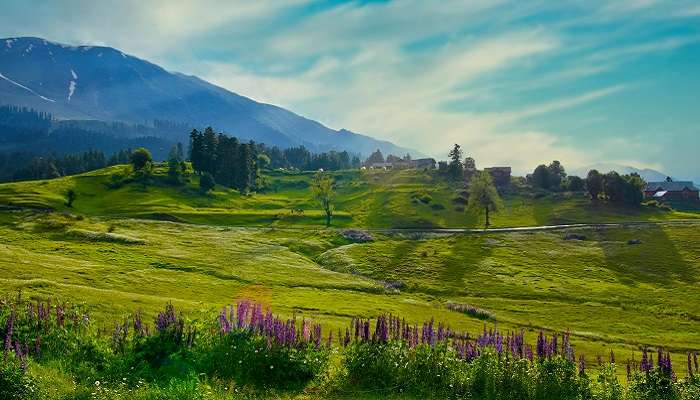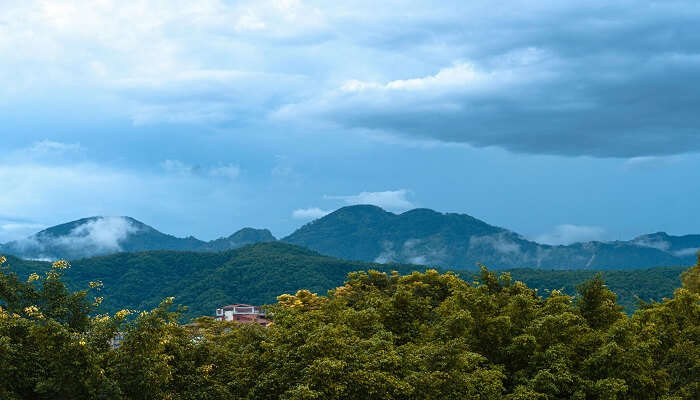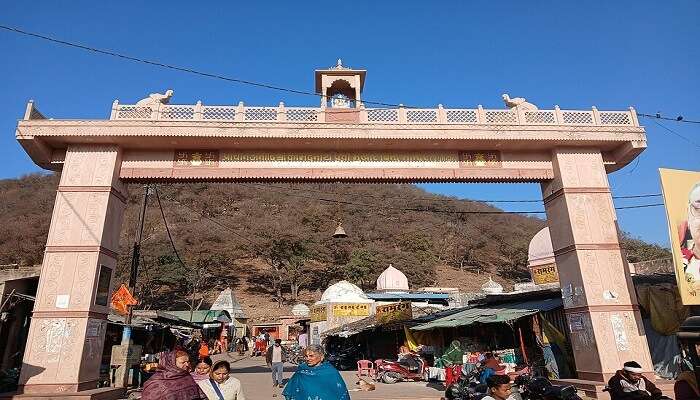Unveil The Beauty Of Jamali Kamali Mosque And Tomb In 2025
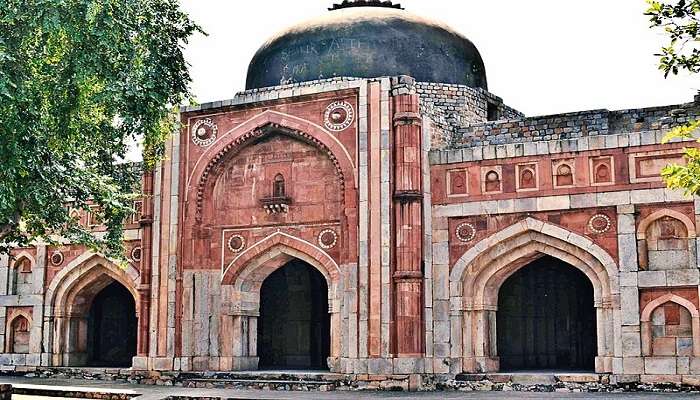
Situated inside the ancient Mehrauli Archaeological Park in Delhi is the Jamali Kamali Mosque and Tomb, one of the absolute beauties of Mughal architecture and heritage. It possesses high historical and cultural value and was built in 1528-1529 during the reign of Mughal Emperor Humayun. The mosque and tomb are named after Jamali, alias Shaikh Fazlullah—a famous Sufi saint and poet. In his lifetime, he stood in great favour with the royal court. His poetical works and his spiritual teachings mark the cultural landscape of the time. This whole complex, consisting of one mosque and two connecting tombs, is calmly located amidst the hustle and bustle of the city and impinges on the spirit of architectural and spiritual opulence of the Mughal period. Let’s dive into the guide to know more about this historical place.
Origins And Significance Of Jamali Kamali
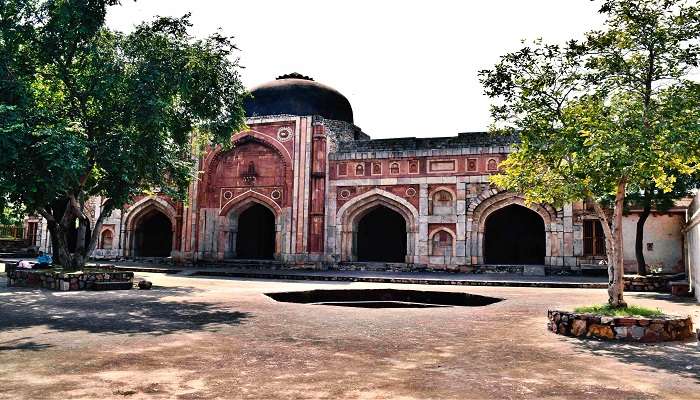
The Jamali Kamali Mosque and Tomb complex in the Archaeological Mehrauli Park of Delhi is a sign of strong cultural and spiritual traditions common during the early Mughal period. The complex comprises a mosque and two tombs dating back to 1528-29 AD during Emperor Humayun’s rule. The name “Jamali Kamali” stands for two personalities: Jamali, the good Sufi saint and poet, and Kamali, whose name remains unknown but is believed to be a close friend or associate of Jamali.
Jamali, an alias for Shaikh Fazlullah or Jalal Khan, in his capacity, was an important saint whose spiritual influence beheld the Mughals and the area as a whole. His works in poetry and spiritual teachings influenced and controlled his time’s cultural and religious ethos. The mosque and tombs stand in his memory for offering prayers and other spiritual activities. When visiting the Jamali Kamali complex, read up on Sufi poetry and the life of Shaikh Fazlullah to get an adequate feel for the history and culture behind the site.
Also Read: Lothian Cemetery
Architectural Wonders Of Jamali Kamali
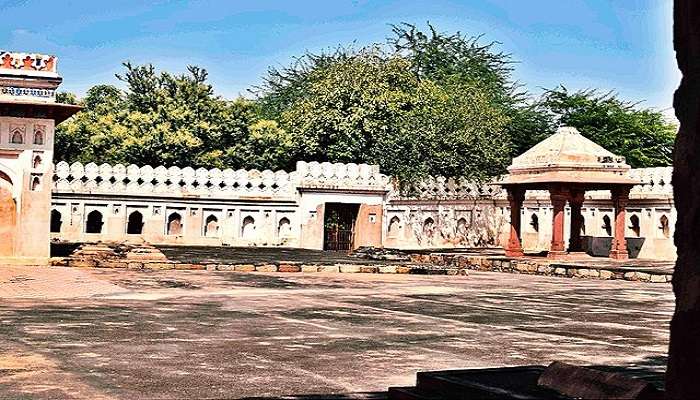
The Jamali Kamali Mosque and Tomb are some of the finest examples of early Mughal architecture; they have an artful integration between the robust design of the period and delicate decorative elements. The mosque, built with red sandstone and white marble, had a broad courtyard with an elegant prayer hall to the extreme. The openings made through the grilles in these screens are designed to let in divine light. All these arches and domes of the mosque are adorned with Persian inscriptions and floral motifs.
The Muslim artistic genius during the Mughal period is thus reflected. On either side of the mosque are two tombs of Jamali and Kamali. Of the two, the tomb of Jamali is excellently decorated with blue tiles and Quranic inscriptions, indicating the best tradition of workmanship. With its quiet environment and architectural beauty, the complex is one of the most captivating sites in this respect. Bring your camera to capture the intricacies of the architecture and serenity of the Jamali Kamali complex. See that you immortalize the fusion of artistic genius with the spirit of spiritualism.
The Jamali Kamali Mosque
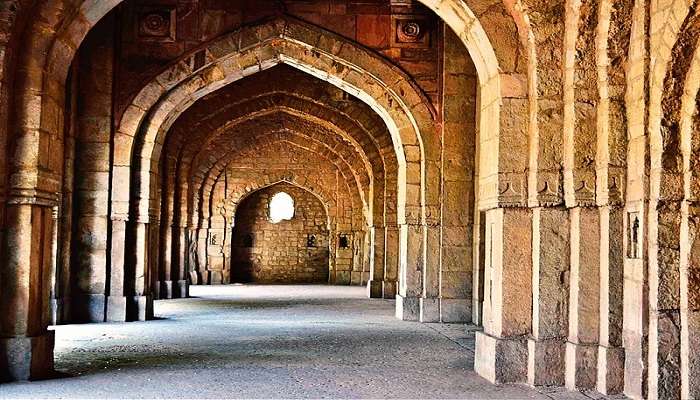
The date for the construction of the Jamali Kamali Mosque and Tomb is said to be 1528-1529, which makes it one of the spectacular early examples of Mughal architecture, showing the stylistic transitions that were happening at the time. Red sandstone is used in this mosque, typical in Mughal construction, but it has a lovely addition of white marble as a beautiful accent. Other smaller arched niches surround the imposing large arch at the entrance; the overall effect is of great harmony and symmetry. The high-vaulted roofing, the profuse minute lattice work in the jail, and detailed carvings have decorated the large and spacious prayer hall, bringing out the tradition of art in the Islamic style.
The spacious courtyard provides an area serene for worship and reflection, encircled with lofty fortified walls that make it even more magnificent and secluded. This mosque is tastefully simple in decoration, pointing out how the Mughals worked on the area’s structural elegance and spiritual atmosphere. While visiting the mosque, look out for the intricate latticework and carvings. Best viewed during the morning light when the sun comes through the jalis in beautiful patterns.
Related Post: Gurudwara Bangla Sahib
The Tomb Of Jamali And Kamali
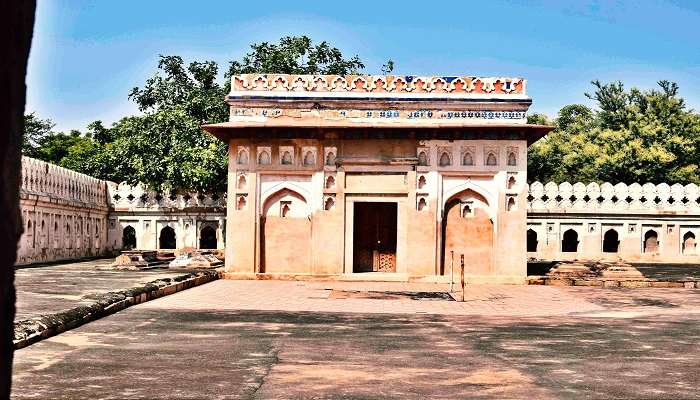
Next to the mosque lie the tombs of Jamali and Kamali, which again strengthen this site’s architectural and monumental value. Of the two tombs, the one belonging to Jamali shows outstandingly exquisite decoration and craftsmanship. It is a square building with a dome on top, with internal walls embellished with minute blue tiles and elaborately inscribed details from the Holy Quran.
This contrasts strikingly with the use of vibrant colours and geometric patterns on tiles, as opposed to the more austere design of the mosque—no doubt a reflection of the importance and reverence accorded to Jamali. On the other hand, Kamali’s tomb is modestly decorated but equally important and harmonically balanced in the symmetrical balance of the complex as a whole. The tranquillity and serenity of the tombs, surrounded by lush greenery all around, make the place a quiet retreat for self-reflection and an appreciation for this site’s historical and spiritual heritage. A flashlight or a camera with a good low-light setting is recommended to fully appreciate the interior decorations in detail within the tomb. This part can be quite dark.
You May Also Like To Read: Mutiny House
In Delhi, this manifold of Mughal heritage is portrayed with magnificent examples from the Jamali Kamali Mosque and the Tomb. These mosques and the sepulchre, as outstanding examples of elegance in architecture and spiritual value, with intricate designs on the structure, serene courtyards, and the historical setting, endow these areas with a glimpse into the cultural and religious life during the early 16th century. It is not only the appreciation of the artistry and skill of the Mughal era; it is spiritual history that is so deep it cannot be ignored. An architecture buff, a history enthusiast, or a seeker of serene spaces—the Jamali Kamali complex holds within its walls something that surely will leave one captivated and enriched. Plan a trip to Delhi and explore the history and heritage.
For our editorial codes of conduct and copyright disclaimer, please click here.
Cover Image Credit: Anupamg for wikimedia commons
Frequently Asked Questions About Jamali Kamali Mosque And Tomb
What is the historical importance of the Jamali Kamali Mosque and Tomb?
The historical importance of the Jamali Kamali Mosque and Tomb is enormous because they represent two of the most important creations of the very early Mughal architecture and spirituality. Dated to 1528-1529, during the reign of Emperor Humayun, it is attributed to a great Sufi saint and poet named Jamali and his companion, Kamali. One of the prominent personas in the Mughal court, Jamali, was popular as Shaikh Fazlullah or Jalal Khan for his poetic flair and spiritualλλη teaching. The complex reflects the cultural and religious setting of that period and the accomplishment of architectural and artistic merits of the Mughal era.
Where is the Jamali Kamali Mosque and Tomb located in Delhi?
The Jamali Kamali Mosque and Tomb are located in Mehrauli Archaeological Park, lying in the area of Mehrauli in South Delhi. Besides this site, many other historical monuments and remains are in this archaeology-rich park. The area is very well connected by road, and the closest metro station would be Qutub Minar on the Yellow Line; from here, one can hire an auto-rickshaw or cab to drop them right at the park's entrance.
What are the architectural features of the Jamali Kamali Mosque and Tomb?
Graceful early Mughal architecture, mainly executed in red sandstone with white marble accents, characterizes the Jamali Kamali Mosque. Its distinguishing features are a spacious courtyard, high vaults, fine latticework, and carvings. Again, the prayer hall is plated with Persian inscriptions and floral patterns epitomising Islamic artistry. Even more impressive are the tombs adjacent to it, especially the tomb of Jamali, covered in exquisite blue tiles with Quranic inscriptions that suitably express the calibre of craftsmanship prevalent at that time. It is this blend of architectural genius with spiritual intent that makes the complex a definite visit for those interested in history and architecture.
Do guided tours for Jamali Kamali complex exist?
Although there aren't officially recognized guided tours with respect to the Jamali Kamali complex itself, very often at the entrance of Mehrauli Archaeological Park you would find local guides who could give you in-depth historical and architectural insights on a visit. You can hire one for optimum experience with valuable explanations regarding the importance of the site, architecture, and politico-social background of the Mughal period. A few heritage walks and cultural tours devised by Delhi-based groups include the Jamali Kamali complex in their itinerary.
What are the best times to visit the Jamali Kamali Mosque and Tomb?
October to March is the best time to pay a visit to Jamali Kamali Mosque and Tomb since this period the climate is very pleasant for an outdoor visit at Delhi. Visiting early in the morning or late in the afternoon will also give you a much more comfortable experience—the temperatures are milder, and the light is better for photography. Best to avoid visiting during April to June when it can get blisteringly hot. Regardless of the season, a visit during the week presents a better opportunity for a more tranquil experience than on weekends, when it gets busy.
People Also Read:
Blue Mosque Moorish Mosque Sheikh Zayed Mosque

Innovative Content Writer Focused on Producing High quality, Original Content that drives traffic and engages readers. Experienced in Content strategy and analytics to measure content performance using tools such as SQL, Power BI, Excel.



